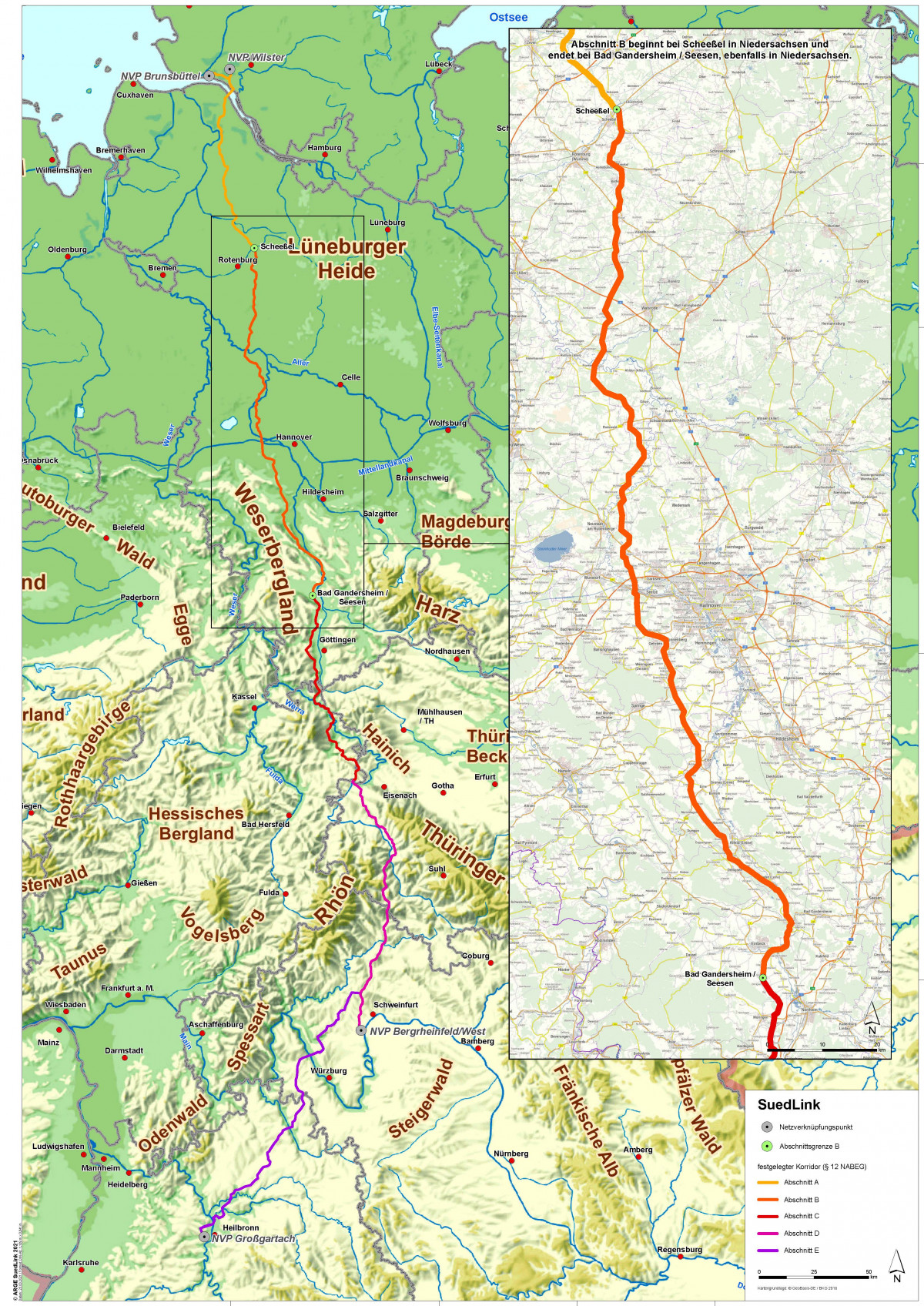German grid agency confirms route corridor for north-south power highway
Clean Energy Wire
Germany’s Federal Network Agency (BNetzA) has defined the route for the new direct current power line that will bring wind power from the North to Germany’s industrial South. It confirmed the route of the last 190 kilometres of the 700-km connection, called SuedLink, which will be constructed by transmission grid operators TenneT and TransnetBW. During the four-year planning period, the grid operators held 200 information meetings and processed 19,000 remarks, TransnetBW said. "We are continuing to drive SuedLink forward as one of the central projects for the success of the energy transition," Werner Götz, CEO of TransnetBW said in a press release. With the latest decision by the grid agency, there is now a 1000 m wide corridor laid out from the state of Schleswig-Holstein to Baden-Württemberg and Bavaria, the press release said. The next step will be to prepare applications for planning approval to formally establish the exact route within the corridor, TenneT managing director Tim Meyerjürgens said. Suedlink will be constructed as underground cables and is to be completed by 2026. With an investment sum of ten billion euros, it is the largest infrastructure project of Germany’s energy transition, the grid operators said.
The German government plans to source 65 percent of power demand from renewables by 2030, and much of it is and will be produced in the country’s windy North. An expansion of the power grid to transport electricity to the industrial hubs in the South is therefore underway but the process has been delayed due to protests from local residents and state governments against new power lines. To alleviate concerns, the federal government made underground cables the norm instead of overhead lines.


